Anyone who has ever been to Singapore's Chinatown will have seen this nondescript building at the junction of Eu Tong Sen Street and Upper Cross Street.
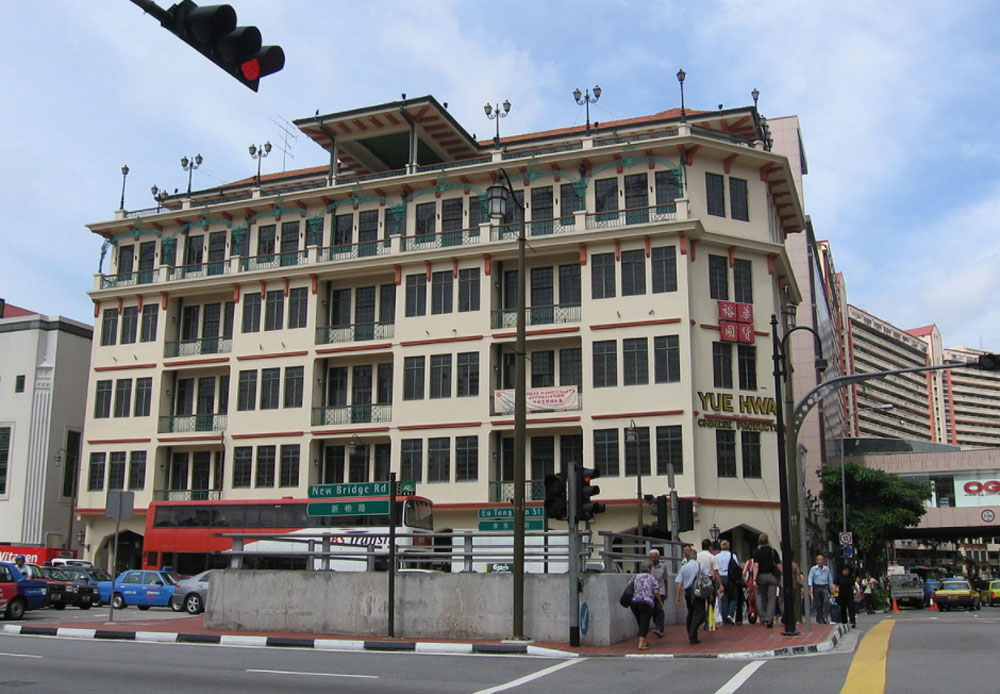
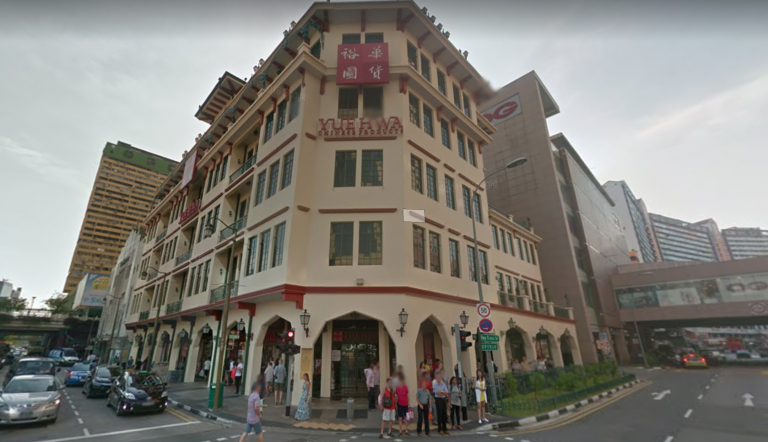
Known today as Yue Hwa Building, this ho-hum-looking structure was once the hottest place in Chinatown, where rich Chinese partied with prostitutes and smoked opium.
Lo and behold, it was also the first Chinese hotel in Singapore with a passenger lift after it was built in 1936.
Six floors of fun
Back then after it was built, the building was known as Nam Tin Building (seen below on the right).
 Photo from National Archives Singapore.
Photo from National Archives Singapore.
Shops were located on the ground floor and hotel rooms occupied the second and third floors.
A Nam Tin Restaurant was housed on the fourth floor, while the fifth floor was occupied by the famed nightclub, Southern Cabaret.
A tea house was located on the roof terrace.
It was the Great Southern Hotel that catered to well-heeled Chinese clientele.
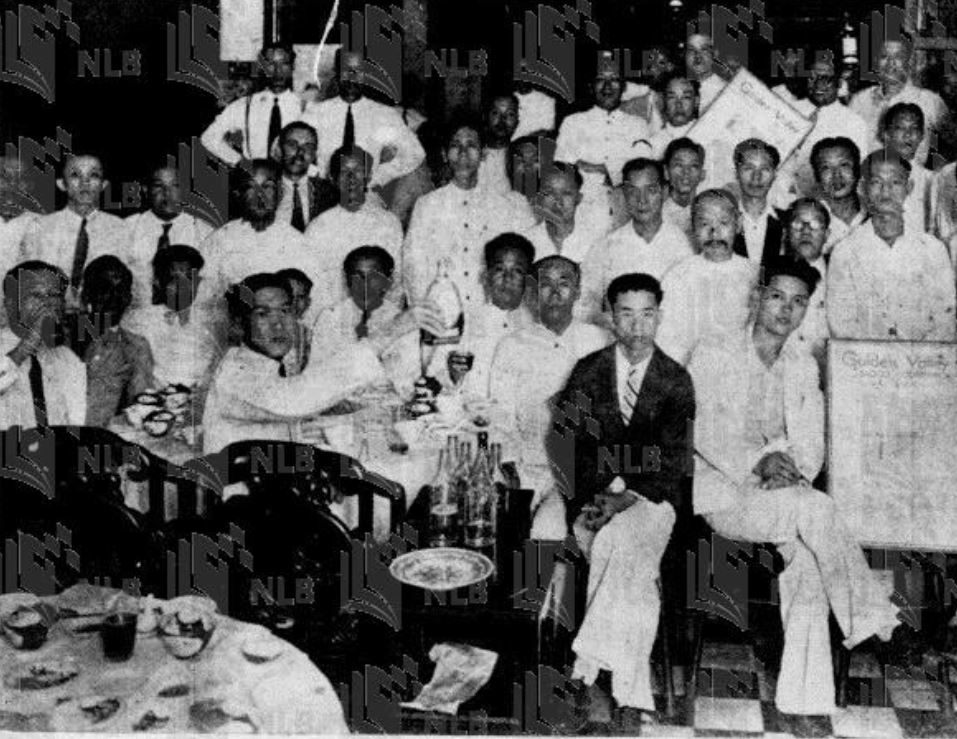 Screenshot from Newspaper SG
Screenshot from Newspaper SG
It was known as the "Raffles Hotel of Chinatown" then. Its guests included celebrities from China and Hong Kong.
European and English-speaking visitors in Singapore at that time stayed at the upmarket hotels like Raffles Hotel, Goodwood Park Hotel and Adelphi Hotel.
Taxi girls with thigh-high slits
The hotel's greatest draw was its cabaret.
In 1948, The Straits Times described the cabaret's luxurious interior.
It had "dragon pillars studded with cut glass" and "beautifully coloured carvings of birds and animals of Chinese mythology" on its walls.
In the centre, was a "rotating multi-coloured lamp, imported from America".
Interior decorations cost $50,000 -- a relatively large sum then.
For company, one could expect to dance with "taxi girls".
They were called that because, like taxis, they could be hired -- priced at $1 for three dances.
These were dance hostesses dressed in colourful cheongsam with thigh-high slits who used to greet guests at the Southern Cabaret.
The party included the consumption of the finest liquor and the smoking of handcrafted opium pipes.
Yet, beneath the fun and glamour, there was also vice and death.
[related_story]
Famed for prostitution
Cabarets were an extremely popular form of entertainment during the 1940s and 1950s in Singapore, and it was not uncommon for cabaret girls to engage in prostitution.
The cabaret girls at Nam Tin were no exception.
When the hotel applied for a renewal of its license for 1961, it was met with opposition by the police on the grounds that the hotel was used for "immoral purposes".
Crackdowns came as no surprise given the government's launch of the "anti-yellow" drive in 1959.
The campaign's name came from a translation of the Chinese phrase "huang se wen hua" (Chinese culture), referring to vices that plagued China in the 19th century. These included gambling, opium-smoking and prostitution.
The hotel eventually reopened in 1962 when their application for a new license finally succeeded.
Suicide building
The six-storey Yue Hwa Building has retained parts of its original facade.
Designed by Swan and Maclaren, the building's architecture was part of the Modern Movement style involving strong horizontal lines and angular arches.
It was modern for its time.
Other similar buildings from this movement include Chinese High School:
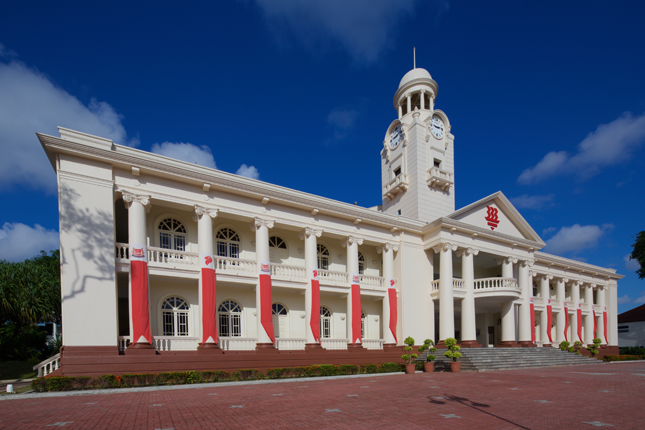 Photo via Roots.sg
Photo via Roots.sg
And due to its height, the building became a common place for people to commit suicide.
There were multiple reports of people falling off the building.
Yue Hwa Building suicide rates decline
It was only after Singapore Improvement Trust (SIT) flats were built in 1952 and 1953 at Upper Pickering Street did the suicides rates at the hotel decline.
These SIT flats subsequently became known as "suicide flats."
 Photo from NAS.
Photo from NAS.
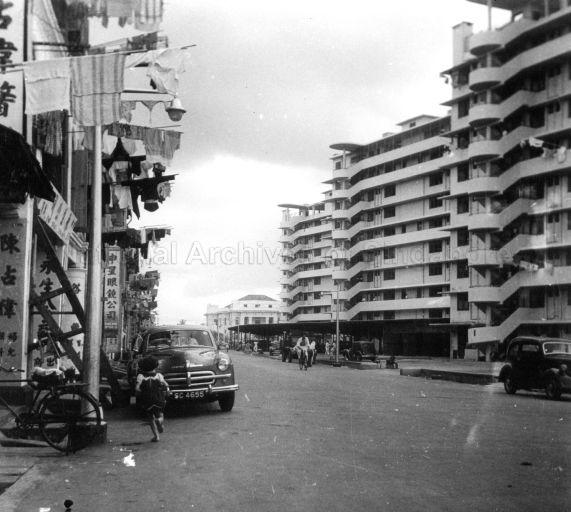 Photo from NAS.
Photo from NAS.
[related_story]
Went out of style
As Singapore was caught in political turmoil in the 1960s and with changing trends, such as rock culture, becoming more prevalent, cabarets went out of fashion.
So did the building's facade, as it was allowed to deteriorate with little upkeeping.
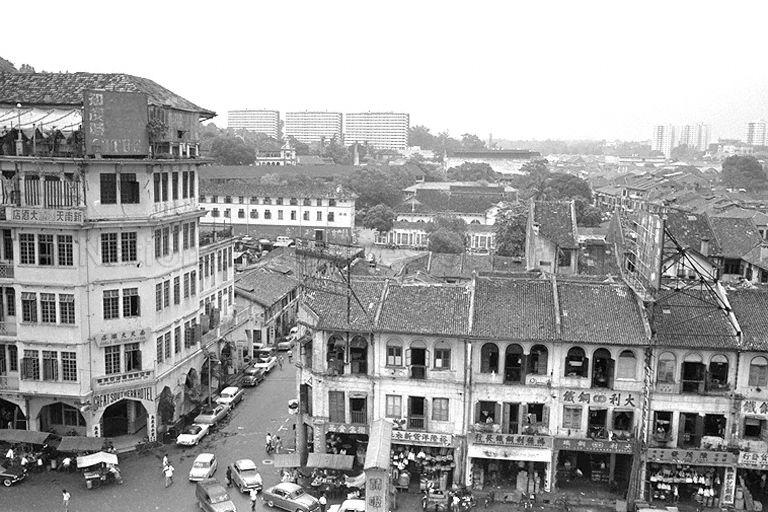 Via National Archives of Singapore
Via National Archives of Singapore
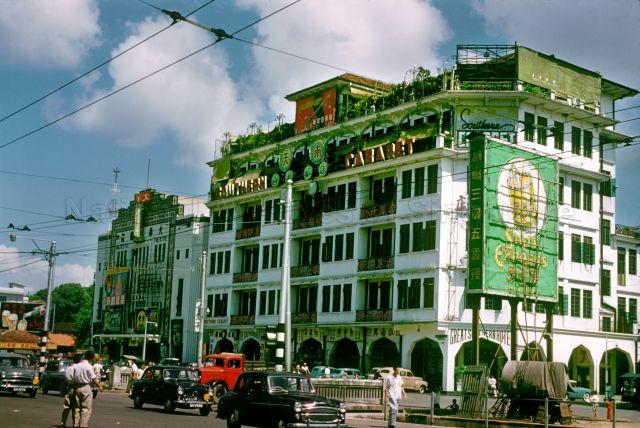 Via National Archives of Singapore
Via National Archives of Singapore
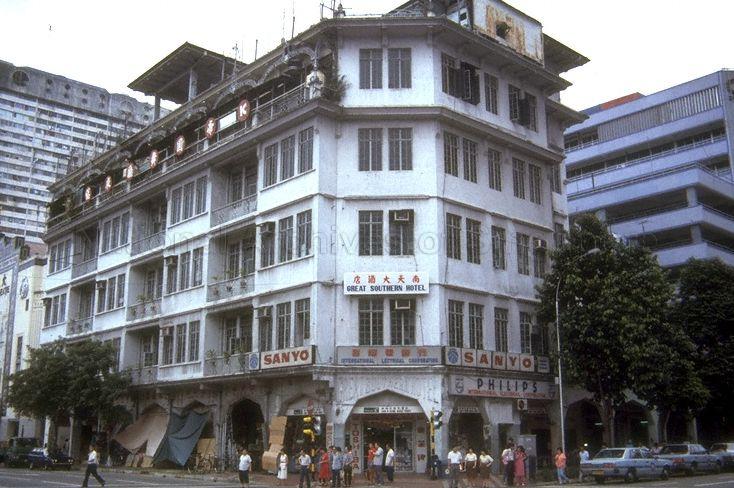 Via National Archives of Singapore
Via National Archives of Singapore
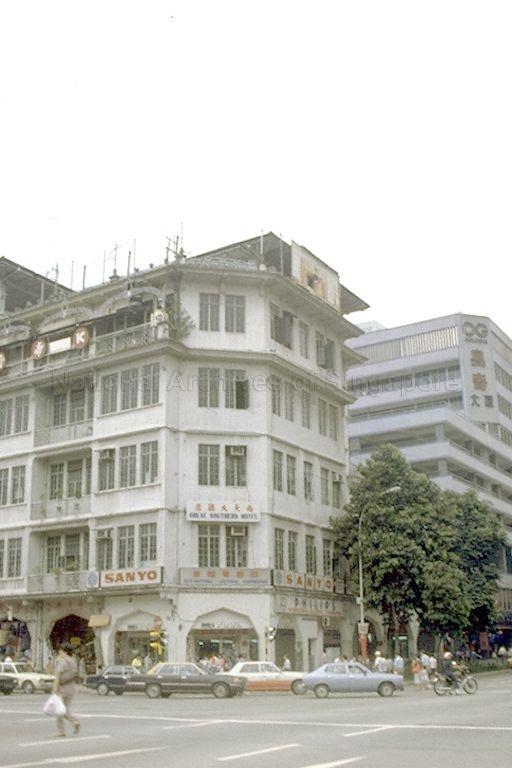 Via National Archives of Singapore
Via National Archives of Singapore
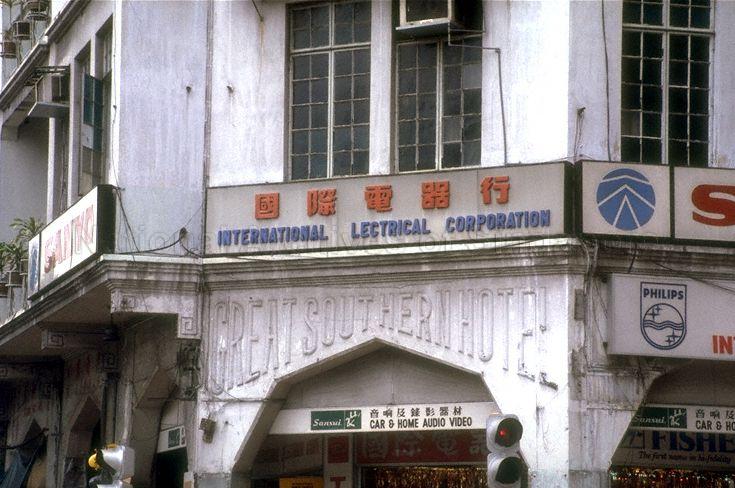 Via National Archives of Singapore
Via National Archives of Singapore
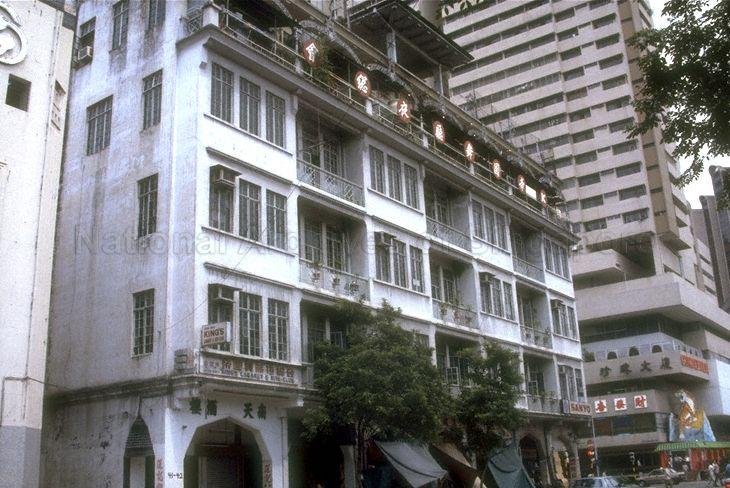 Via National Archives of Singapore
Via National Archives of Singapore
Surrounding buildings also became taller and more modern, resulting in the hotel eventually ceasing to remain relevant in the changing landscape.
By the time of its closure in 1994, the Great Southern Hotel was operating only 40 rooms, with each room equipped with a double-bed and ceiling fan for as little as S$40 a night.
It catered to budget travellers.
In 1993, Lum Chang Holdings sold the building to Hong Kong businessman Yu Kwok Chun for S$25 million -- a steal -- and converted it to the first Yue Hwa Chinese Products department store in Singapore in 1994.
The renovation and restoration process itself cost S$25 million. It conserved the exterior and won the building the Architectural Heritage Award by the Urban Redevelopment Authority in 1997.
Features such as an atrium and waterfall were added to the interior.
It now houses a department store selling Chinese goods.
The building has been gazetted for conservation by the Urban Redevelopment Authority.
Top photo adapted from NAS & Roots.sg
If you like what you read, follow us on Facebook, Instagram, Twitter and Telegram to get the latest updates.
